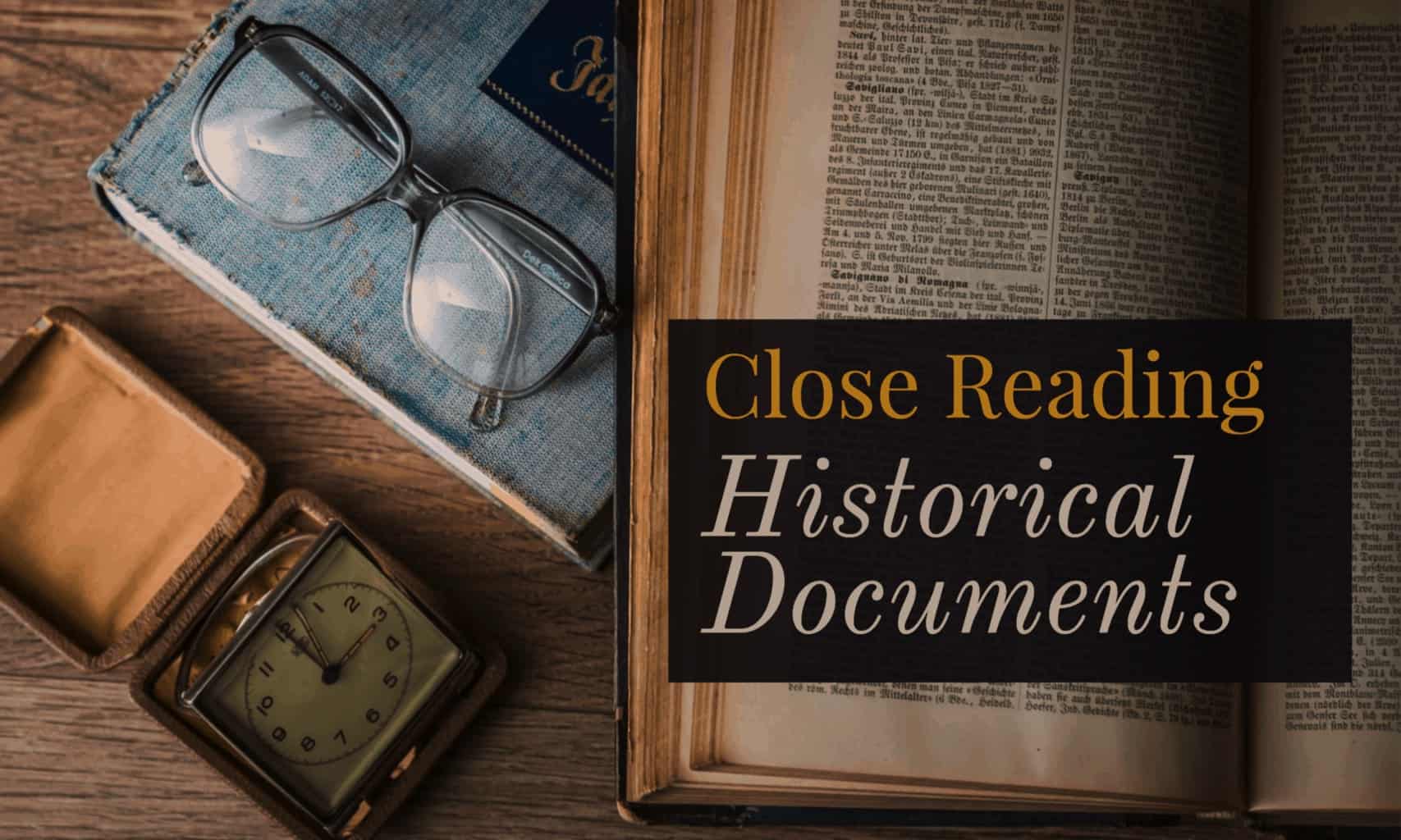Overview
This class concludes a multi-class examination of historical thinking skills based on the work by Stanford History Education Group. (SHEG). Today we will examine Close Reading the last of our four key historical thinking skills – Sourcing, Contextualization, Corroboration and Close Reading. See Historical Thinking Chart (pdf in English and Spanish at SHEG).
Then students will offer brief pitches with ideas for their demonstration lessons after fall break.
Class Session
Teachers can use historical documents to build literacy skills in a content area while empowering students to be the historian in the classroom. But document-based instruction in this context requires four key elements to be successful:
- The right documents. (shouldn’t be reliant on background knowledge)
- Knowing how to “read” the historical document.
- Letting students discover their own patterns, then asking students to describe, compare and defend what they found.
- Basing the task on enduring questions, the kind that students might actually want to answer.
In Class 7 we will practice some strategies for assisting students to more closely read a document (in all their multimedia formats) by answering three questions. Broad version:
- What does it say?
- How does it say it?
- What’s it mean to me?
More specifically, what do we mean by close reading? Teachers can guide students with scaffolding questions that explore “texts” (in all their formats).
Key Ideas and Details:
What does the text say? Identify the key ideas. What claims does the author make? What evidence does the author use to support those claims?
Craft and Structure:
Who created the document? What’s their point of view / purpose? How did the text say it? How does it reflect its historic time period?
Integration of Knowledge and ideas:
Distinguish among fact, opinion, and reasoned judgment in a text. Recognize disparities between multiple accounts. Compare text to other media / genres. How does it connect to what we’re learning?
And what’s it mean to me?
How does the document connect to my life and views? The author is trying to convince me of … I do (or don’t) trust this document because … What historic “voices” are missing?
Assignment 6: Teach a Lesson | Student lessons 21-A6
Students will develop and deliver a 25-30 min lesson in their assigned class. Student should be prepared to deliver the lesson via Zoom in our Oct 18th class.
About the lesson The lesson should teach historical thinking skill(s). Specific content of lesson is up to you.
- This lesson should be delivered as if we were your class.
- Your peers will serve as participant observers noting lesson content, nature of the student task, lesson delivery and student workflow.
- Feel free to design a flipped lesson in advance and let the class know of your plans and required viewing.
- If you have a significant amount of reading required, send it to us in advance.
About the post. The lesson should be supported / explained in a post due by Oct 16th.
Think of your audience as another teacher who might want to borrow this lesson. Do they have all the resources and explanation they need?
The post should include:
- Interesting title and relevant featured image
- Target audience and setting – what class and how might this be used?
- Content – what will be studied? Why is it interesting or important?
- Process – what will you do – what will students do?
- Resources for lessons – what do you plan to provide the students?

